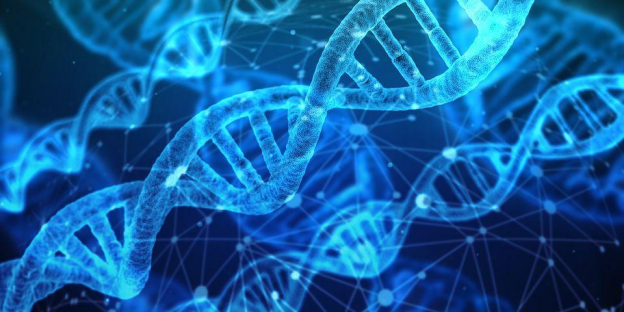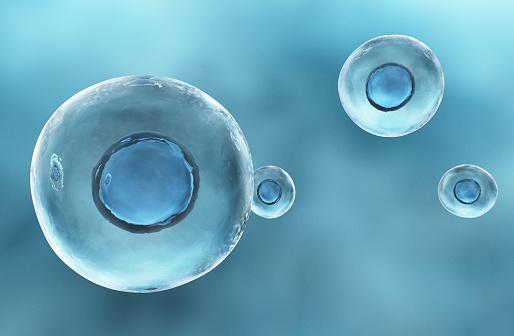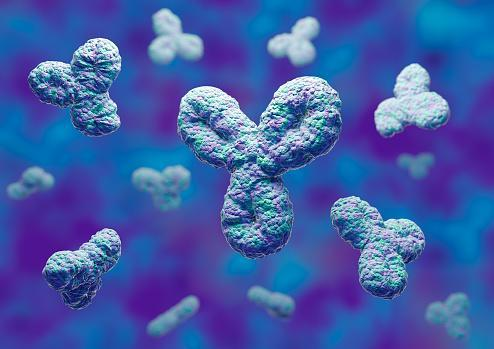An Introduction To Protein Expression And Purification Services
Apr 13th 2022
Researchers can now express heterologous proteins in various biological systems due to advancements in cloning, genomics, and numerous molecular biology techniques. Researchers are left with a wide range of powerful downstream applications due to the ability to express recombinant proteins, which they use to further the research studies. The protein expressed on a small scale is majorly used in studying and verifying protein functions.
In contrast, those produced on a large scale are significant in studying enzymes, antibodies, and vaccine productions hence determining optimal cell growth and protein expression conditions for small and large-scale protein expression systems. Whether a prokaryotic or eukaryotic expression system is required for post-translational modifications, the cell type will significantly impact the tools and reagents needed for optimum protein expression. This article will look at the protein expression and purification services in detail.
What is protein expression?
Protein expression is how proteins are produced, modified, and regulated in living things. Custom protein expression can be synthesized through laboratory techniques, while recombinant protein production is done through cellular machinery. Besides, scientists and researchers have been developing new protein expression techniques that will help simplify the process. Several scientists and laboratories have been offering quality protein production services.
What is recombinant protein?
To understand how custom protein is synthesized, we have to ask ourselves what is recombinant proteins. Recombinant proteins have been changed for maximum protein expression services or altered to assess protein function and are encoded within the protein-expressing plasmid.
Researchers can use the capacity to add, remove, or change the protein-encoding sequence by a single nucleotide to examine a wide range of fundamental scientific problems and elucidate the protein's function in both healthy and sick tissues. Recombinant protein expression technology has far-reaching implications beyond basic research and is critical for creating life-saving medicines and vaccines.
Protein translation and transcription
Transcription is an essential process in collecting molecular tools and the creation of pathways for protein expression. Transcription manifests in three steps which are elongation, initiation, and termination. Transcription starts when the double-stranded DNA is unwound to enable the binding of RNA polymerase. In eukaryotes, the transcription process is regulated through repressors and activators. However, in prokaryotes, there is no special regulation of RNA.
Similarly, the translation process requires macromolecules such as ribosomes and RNA and micro molecules such as amino acids, GTP, and ATP. Translation and transcription protein are essential processes that help in custom protein expression. After the translation process, polypeptides are synthesized in different ways to complete their structure and designate their location. The modifications that take place after translation include; polypeptide folding, change of amino acids, disulfide bridge formation, protein modification, and glycosylation

Image source; https://pixabay.com/illustrations/dna-analysis-re...
Protein expression host systems
For protein expression, a host system has to be selected. There are Different host systems, such as bacteria host systems and mammalian cells. Bacteria are the workhorse organism for manufacturing recombinant proteins catalyzed by the rapid growth of kinetics and plasmid conversions in E. coli. The 30S and 50S ribosomal subunits of the 70S bacterial ribosome are required for bacterial protein expression. Plasmids harboring antibiotic-resistant genes are employed as a selection tool to detect and isolate bacteria that have adopted plasmids containing the protein-encoding sequence of interest, preventing the growth of plasmid-free cells.
While additional genetic sequencing is frequently required to validate the presence of your gene sequence, plasmid-free bacteria are commonly removed using antibiotics that impede bacterial protein synthesis. The bacterial expression system has a short doubling time, making it convenient for expression host cells. Insect, yeast, and mammalian cell lines are also commonly employed for protein expression. Eukaryotic cell lines have different molecular machinery for generating post-translational changes (such as glycosylation).
They are often required for protein functionality and proper downstream analysis. However, it's good to note that some expression systems, such as bacteria, contain toxic pyrogens, so the synthesized protein should be effectively tested. Therefore, a suitable purification method will be applied during the protein production process. E Coli expression systems are the most preferred host systems in custom protein expression because they give a high protein yield.

Image source; https://media.istockphoto.com/ id1327744023?s=612x612
Protein expression vectors
Expression vectors, also known as plasmids, are circular DNA sequences often utilized by scientists to host the gene encoding their desired protein. Plasmids encoding the desired gene are transformed or transfected into cells to overexpress a protein. Plasmids contain a multiple cloning site (MCS), antibiotic resistance genes for clone selection, unique tags for protein expression and purification, and vital promoter regions to drive protein expression. Other valuable elements that facilitate cloning are clone selection, protein expression, and purification.
Protein expression vectors come in various shapes and sizes, with many of these components interchangeable depending on the application's needs and the cell type utilized for protein expression. Protein vectors aim to act as promoters regions and enhancers, ensuring good transcription of the gene carried in the expression vector. Further, it also provides efficient production of protein. Protein expression through protein vectors is only achieved by producing considerable RNA, then translated into protein.
Image source; https://media.istockphoto.com/id1138386569?s=612x...
Protein expression conditions
Protein can only be expressed under a specific condition. Protein is generated using isopropyl- β-D-hiogalactoside chemical or through the alteration of carbon found in E. coli cells. In both methods, the cells are grown with high densities, especially when exposed to conducive conditions such as a baffle shake flask. However, the expressed polymerase should be induced in a mid-to-late log phase regardless of the cell density, ensuring maximal yield. This will help avoid any challenges that arise during the stationary such as the generation of proteases.
Most expressed proteins will thrive at moderate temperatures and can dissolve at 15–25 °C. These temperature conditions will allow the newly produced proteins to fold correctly. Therefore, temperature regulation is significant during induction and the whole production process. To understand how protein production processes, one can learn more through laboratories that offer protein expression services.
Antibody synthesis.
Antibodies are immune proteins that aid in the fight against viruses and bacteria. Antibody-based medicines can help in the treatment of infections and other diseases. For Antibody production, a laboratory or farm animal is injected with a specific antigen which leads to high production of antibodies in the serum. The produced antibodies are then retrieved from the animal. Monoclonal antibodies are produced in the hybridoma cell lines through antibody-secreting spleen cells and the immunized animal. Antibody sequencing services help identify sequence amino acids in any antibody. Monoclonal antibody sequencing is done through hybridoma cell line sequencing and clonal B cell sequencing. In addition, antibody specificity is essential in identifying the goodness of fit between paratope and epitope.
Several biochemist laboratories have been offering antibody production services. Antibody plays an essential role in protein production. Antibodies are major components of the protein involved in fighting germs. Custom antibody production services have been progressive due to technological improvement. In addition, the custom antibody production guide is simplified, allowing researchers to follow it appropriately. Antibody sequencing services help identify sequence amino acids in any antibody.

Image source; https://media.istockphoto.com/ id1299289706?s=612x612 Peptides synthesis
Peptides synthesis
Peptides are essential components in the production of the custom antibody. Peptides synthesis was one of the most challenging and tiring tasks with little yield. However, with advancements in technology, peptide production is straightforward and gives more output at a given time. Peptide synthesis can be classified as peptide bonds between two amino acids. Peptides are usually flexible chains found in amino acids.
With modern technology and research knowledge in the chemistry field, it's possible to produce peptides with different designs and unique biological responses. There are various methods of peptide production, such as solid-phase. Just like protein, Peptides have to undergo a purification process after production. Purification helps to remove any side products that the reactions may have formed during the production process, such as the isomers.
Gene's production
Genes are responsible for encoding protein. Therefore, gene expression is a crucial factor in protein expression as it determines the functions of a particular cell. Foreign genes expression is affected by a variety of factors such as the transcriptional genes, the ribosome binding sites, the location of the coned protein within the host cell, the metabolic rate of the cell, the stability of the codons utilized in the foreign gen and the number of foreign genes expressed. The number of particular proteins synthesized in any cell depends on the balance between the protein's synthetic and degradative biochemical pathway.
Therefore, there should be a regulation of gene expression throughout the whole process of protein synthesis. Gene synthesis is regulated by introducing the nucleus, especially at the transcriptional level controlling the eukaryotes. Notably, only a specific number of genes are expressed in cells at a particular time. Gene expression is usually affected by environmental changes and requires some regulatory precautions. Availability of nutrients affects the prokaryotes' genes, while nutrients allow the bacterial organisms to change the transcription patterns in response to environmental conditions effectively.
Protein purification
Protein purification is a set of procedures for isolating proteins from a complicated mixture. Purifying the protein of interest is critical for determining its function, interactions, and structure. Purification can separate the mixture's protein from other components, dividing the required protein from unwanted proteins. The most time-consuming element of protein purification is usually separating one protein from the others. The most common activities used in the separation process are biological, Physico-chemical features, binding affinity, and differentiation of protein size. Protein isolate is the word for the pure outcome. Protein purification is a significant stage in custom protein expression that can be done preoperatively or analytically. There are four fundamental protein purification steps:
I.Cell lysis II.Protein binding to a matrix III.Washing IV.Elution
Methods of protein purification methods.
Extraction
Extraction is a purification that involves bringing out the protein into solution from the cells by breaking the tissues or cells on the host systems. Several methods are used, such as sonication, recurrent freezing and thawing, and homogenization. The extraction method applied in purification depends on the fragility of the protein and host cells. Soluble protein will remain in the solvent and can be separated from the cell membrane through centrifugation.
Differential and precipitation Solubilization methods are suitable for large-scale protein purification. In this method, protein is precipitated using ammonium sulfate. This is achieved by adding significant portions of ammonium sulfate and retrieving the various parts of the precipitate protein. This strategy is beneficial as one can purify large volumes of protein at a lower expense.
Ultracentrifugation
In this method, a centrifugal force is used to uncover blends of particles of varied weights or densities accommodated in a liquid. A bottle with a protein mixture is spun at high speeds where the angular momentum tends to yield an outward force to every particle equivalent to its mass. Due to this force, the given particles move through the liquid. Chromatography
Chromatography is a protein purification method that involves more than one chromatographic step. Flowing a solution containing the protein through a column filled with various materials is the basic technique in chromatography. Different proteins interact differently with the column material. They can be distinguished by the time it takes to transit the column or the conditions under which the protein must be eluted. Different chromatography methods are used in protein purification: Size Exclusion Chromatography, Ion Exchange Chromatography, Affinity Chromatography, Metal Binding, and Immunoaffinity Chromatography.
Purpose and importance of protein purification
Purification of proteins is essential for determining their function, structure, and interactions. The primary purpose of protein purification can be divided into: 1.Preparative purification: preparative purification aims to create many purified proteins for later usage. Several preparative purification procedures are frequently used to remove bi-products, such as host cell proteins, which could pose a patient's health risk. 2.Analytical purification. It yields a small amount of protein for research or analytical objectives, such as protein identification, qualification, structural, post-translational modification, and function studies. The first proteins to be purified to the point that they could be crystallized were pepsin and urease.
Final thoughts
Protein expression and purification are concerns that have attracted researchers' attention in the biochemistry field. Protein expression can be defined as how living cells produce and modify proteins. Protein production has also been expressed through laboratory technology. There is another method of protein expression known as chemical synthesis.
This method is significant in producing a protein with unnatural amino acids, toxic proteins to biological expression, or proteins labeled at specific sites. Chemical protein synthesis has high-quality protein but is only convenient for small proteins and peptides. This method may prove to be expensive for more significant quantity protein expressions.

